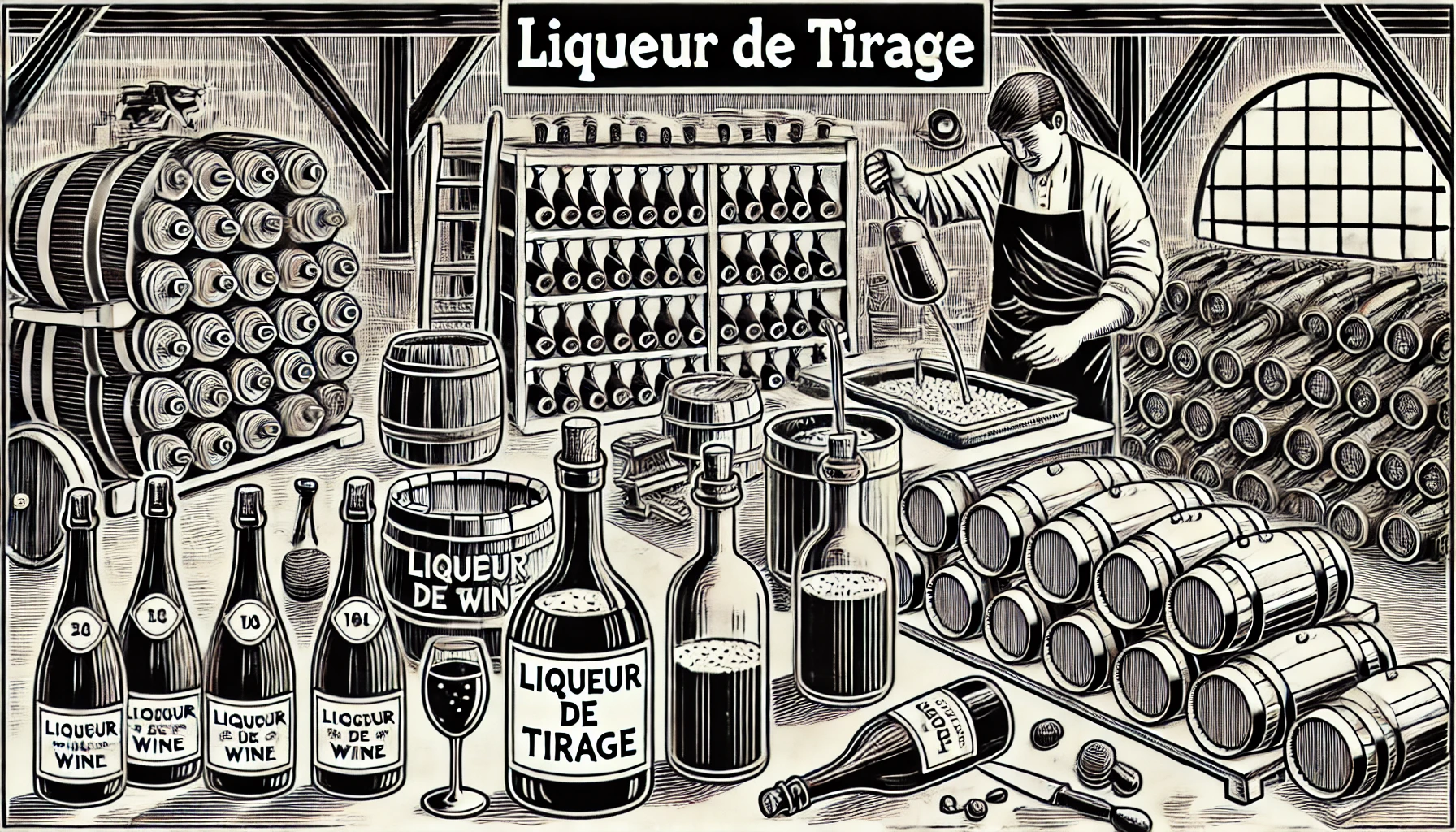
Liqueur de Tirage is a crucial component in the production of sparkling wines made using the traditional method (also known as méthode champenoise), which includes Champagne. This mixture consists of wine, sugar, and yeast, and its primary purpose is to initiate a second fermentation inside the bottle. After the initial fermentation is complete, winemakers add the liqueur de tirage to the still base wine before sealing it with a temporary closure, typically a crown cap.
The added sugar serves as food for the yeast, which consumes it and produces carbon dioxide (CO₂) and alcohol. Since the bottle is sealed, the carbon dioxide is trapped inside, dissolving into the wine and creating the signature bubbles that define sparkling wines. This process is called secondary fermentation and can last from several weeks to months, depending on the wine and producer’s preference.
During this fermentation, yeast cells eventually die, and the wine ages on these dead yeast cells, known as lees. This aging period contributes to the development of complex flavors such as brioche, toast, and nuttiness, which are often associated with high-quality sparkling wines like Champagne.
Secondary Fermentation
Once the secondary fermentation is complete and the wine has aged sufficiently, the bottles undergo a process known as riddling, where they are gradually turned and tilted to collect the yeast sediment near the bottle neck. The sediment is then removed through disgorgement, and a final mixture called liqueur d’expédition may be added to adjust the sweetness level of the wine.
Liqueur de tirage plays a key role in creating the bubbles and complexity found in sparkling wines, making it an essential part of the traditional method of sparkling wine production.
Curious about more wine terms and insights? Visit our Wine Wiki section and explore the basic wine terms for expert definitions and tips!